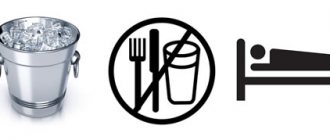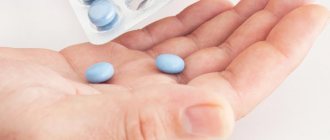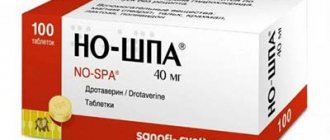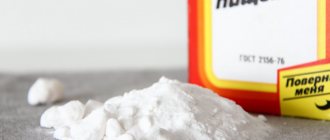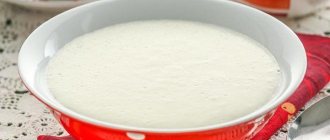Pathogenesis of the disease
From the digestive tract, alcoholic drinks containing toxic substances are absorbed into the bloodstream and enter the liver and pancreas through the bloodstream, causing anatomical and functional changes in them.
At the first stage, the following processes occur:
- the concentration of proteins in pancreatic juice increases sharply;
- the production of gastric juice increases;
- the secretion of bile in the liver is activated, and the concentration of bile acids in it increases;
- the increased volume of gastric juice in the duodenum increases the production of the hormone cholecystokinin, leading to dysfunction of the sphincter of Oddi.
Further, the increasing concentration of protein compounds leads to their coagulation and the formation of dense accumulations that clog the ducts and block the outflow of pancreatic secretions. Due to increasing pressure, active enzymes accumulated in the ducts begin to saturate and digest the gland tissue, causing the appearance of necrotic foci.
Dying organ cells trigger the production of serotonin and mast cells. As a result of this, a sharp narrowing of blood vessels occurs and the development of acute inflammation begins, which is accompanied by severe pain, symptoms of intoxication and dyspepsia.
Digestion by pancreatic enzymes after blocked ducts
Gradually, the pancreatic parenchyma is replaced by connective tissue, and a significant decrease in the level of enzyme production occurs. The organ ceases to fully perform its function, which leads to disruption of the digestion process and the development of diabetes.
If the patient continues to drink alcohol during pancreatitis, the consequences of the resulting chain reaction become irreversible and in most cases lead to death.
Symptoms and signs
Acute alcoholic pancreatitis with intense spread of inflammation in the cavity of the pancreas and death of its tissue structures is manifested by sharp painful symptoms. The main signs of pancreatitis include:
- severe pain of a girdle nature in the vast epigastric region, unbearable painful symptoms can also be supplemented by a burning sensation,
- a characteristic symptom of the development of alcoholic pancreatitis is the appearance of acute pain after consuming fatty foods as food, as well as alcohol-containing drinks,
- intense feeling of nausea, copious vomiting, not accompanied by a subsequent feeling of relief,
- development of diarrhea,
- intensive weight loss against the background of a pathological dysfunction of the digestive tract, a decrease in the level of absorption and assimilation of nutrients and a prevailing fear of acute pain occurring after eating, which leads to a lack of normal nutrition.
The presence of the above symptoms is the basis for making a primary diagnosis and prescribing the most effective treatment regimen.
With the development of alcoholism, symptomatic manifestations of damage to the pancreas can be supplemented by an increased level of irritability, a feeling of general weakness, as well as loss of interest in life. Moreover, alcoholics have all the classic signs of dysfunction of the digestive tract:
- bloated belly,
- development of flatulence,
- feeling of pain during palpation examination of the digestive organs,
- loss of appetite, up to its complete loss,
- unpleasant odor from the patient's bowel movements.
An additional symptom is often an increase in body temperature, which can remain normal even after alcohol intoxication of the pancreas.
Scheme of pancreatic lesions
When alcohol-containing drinks enter the human body, they are broken down into metabolites, which have a direct toxic effect on the tissue structures of the pancreas. This leads to an increase in the secretion of proteins in the pancreatic juice, as well as an increase in the secretion of hydrochloric acids in the stomach cavity, and in the liver, intensive activation of processes for the production of bile and an increase in the level of its content. In the cavity of the duodenum, an increased level of gastric acids contributes to excessive secretion of cholecystokinin, or as it is also called pancreozymin, which exceeds the norm by 10 times.
An increased level of protein components in pancreatic juice promotes activation of coagulation processes, during which protein components begin to precipitate and form insoluble protein lumps that clog the pancreatic ducts. There is a pathological disruption of the natural outflows of pancreatic enzymes into the intestinal cavity, which leads to an increase in internal pressure in the ducts and pancreas and the activation of not yet active pancreatic enzymes. Saturation of the tissue structures of the pancreas with aggressive activated pancreatic enzymes in the form of pepsin, phospholipase, elastasin and chymotrypsin agent leads to the beginning of the process of self-digestion of the gland.
The development of internal processes of self-digestion of the pancreas leads to decomposition and subsequent death of its tissues, which in medicine is called necrotic lesions.
Tissue necrosis activates a chain reaction in the body through the active release of serotonin, which promotes vasoconstriction and mast cells, which activate inflammatory processes. It is quite problematic to cure an advanced process without the use of potent medications and qualified medical care.
This is how the process of acute inflammatory damage to a parenchymal organ is formed, accompanied by acute painful symptomatic manifestations and intense discharge of vomit.
Symptoms of acute and chronic alcoholic pancreatitis
At the initial stage of the onset of alcoholic pancreatitis, a person may not be aware of the development of the disease, but constant drinking of alcohol aggravates the situation. As a result, with the development of alcoholic pancreatitis, the following symptoms can be noticed:
- Indigestion of food (for example, milk) is the first sign of disturbances in the digestive system;
- acute pain in the hypochondrium (on both sides), which turns into shingles. Painful sensations arise unexpectedly; at the first exacerbation, they can cause discomfort to the patient for 7-10 days, while the intensity of the pain will constantly increase. In chronic pancreatitis, colic may last for several more weeks;
- Possible bloating;
- Intense vomiting, after which there is no relief;
- Constipation at an early stage of the development of the disease, turning into systematic diarrhea;
- Dry mouth, thick coating on the tongue;
- Problems with blood microcirculation in the vessels, which leads to the formation of pinpoint hemorrhages in the navel area and the appearance of bluish spots on the face, abdomen and sides.
These symptoms characterize alcoholic acute pancreatitis. Also, during attacks, fever, mental confusion, nausea, lethargy, weakness, impaired renal function, etc. may occur.
If alcohol consumption is not excluded, exacerbations with increasing intensity will occur more and more often, which will lead to a chronic form of the disease and the occurrence of concomitant diseases, one of which is diabetes mellitus.
Unlike the acute form of the disease, alcoholic chronic pancreatitis has the following symptoms:
- all functions of the pancreas are disrupted;
- the patient rapidly loses weight;
- in every third case, pancreatitis is accompanied by a disease such as diabetes;
- ascites and jaundice occur;
- the appearance of blockage of the splenic veins is noted.
All of the above symptoms affect the rapid deterioration of a person’s health, which can soon lead to loss of ability to work and disability without taking necessary and urgent measures in the form of giving up bad habits and undergoing comprehensive treatment.
Treatment of alcoholic pancreatitis.
An acute inflammatory process occurs simultaneously, therefore, when the first symptoms appear, it is necessary to urgently hospitalize the patient. Untimely medical care can lead to autointoxication, acute renal failure, circulatory hypovolemic shock, cerebral edema and other common causes of death. Treatment is carried out under the supervision of a gastroenterologist, narcologist, surgeon, endoscopist, psychotherapist, endocrinologist and other specialists. The main condition for treatment is to stop drinking any alcoholic beverages and smoking. Depending on the degree of the disease, the following are prescribed: General recommendations. Therapeutic fasting. Diet therapy. Compliance with the diet Table No. 5 according to Pevzner throughout life. Conservative treatment (to eliminate symptoms) Taking microencapsulated enzymes for replacement purposes, analgesic and antiemetic drugs. Blood glucose levels are controlled. Surgical treatment (removal of part of an organ) is carried out in case of complicated disease for the following indications:
- Cysts in the tissue cavity containing fluid, abscesses with a capsule filled with pus;
- Pathological fistulas in the ducts;
- Blockage of the main duct of the gland;
- A malignant tumor that poses a threat to the patient's life.
Forecast and statistics of specialists In the acute course, the outcome depends on the severity of the disease; it often ends in pancreonicrosis, which leads to the death of the patient. In chronic alcoholic pancreatitis, the prognosis is also unfavorable, since in frequent cases a progressive form of the disease is observed. Without appropriate therapy, an abusing patient can have serious complications and consequences:
- Cysts, abscesses, fistulas;
- Development of obstructive jaundice (poisoning of the body with poisonous bile pigments that enter the bloodstream);
- Diabetes;
- Development of a malignant tumor (at this point the organ loses the ability to distinguish its cells from tumor cells);
- Gastroduodenitis (disease of the duodenal mucosa and stomach lining);
- Cholecystitis (inflammation of the gallbladder);
- Cirrhosis of the liver;
Observations showed that 29 of 58 patients died within 5-13 years from the onset of the disease and in the remaining patients, many calcifications were found in 70% of cases. Among 65 patients who were observed for 4 years, 46 had alcoholic pancreatitis. And only 5 patients were operated on. During this period, 26 cases of death were recorded, 39% of them from complications of alcoholic pancreatitis, 16% from malignant tumors and 47% from other causes. As a result of the data obtained, an approximate rate of expected mortality after 8 years was calculated, which was 50%. It was also noted that exactly half of patients suffering from chronic pancreatitis die within 20 years from diseases associated with alcoholism, and not from pancreatitis itself. However, if the primary factor is eliminated, the development of destructive processes slows down significantly. And with a complete cessation of drinking alcoholic beverages, following all recommendations, diets, and adequate medical therapy, there is a chance of achieving stable long-term remission from 5 to 7 years. This greatly improves the quality of life, and most importantly slows down the progression of the disease.
Treatment of pancreatic inflammation
In case of intoxication with alcoholic beverages, smoking and other bad habits are completely excluded
This is extremely important to relieve and relieve inflammation from the irritated pancreas. Since alcoholic pancreatitis is fraught with diabetes mellitus, doctors are taking resuscitation measures to prolong the period of remission
Here are valuable recommendations in this clinical picture:
- in order to support and strengthen liver function, the patient is strictly prohibited from consuming heavy foods in the diet - fats, smoked meats, preservatives during the period of treatment and remission;
- since pancreatitis weakens the functions of the entire body, it is necessary to attend consultations with such highly specialized specialists as a gastroenterologist, surgeon, endoscopist, endocrinologist, radiologist, psychotherapist, and narcologist.
- Since alcoholic drinks pathologically increase the concentration of sugar in the blood, the patient needs systematic monitoring of this indicator, oral intake of fat-soluble vitamins and microelements.
- in the relapse stage, you need to take a horizontal position, take a couple of No-shpa tablets orally and apply cold to your stomach. It is recommended to temporarily starve yourself and not overload the inflamed pancreas.
- The surgical procedure is indicated for complicated clinical situations by opening and excision of the cyst, thereby eliminating the risk of dangerous complications.
Clinical symptoms of alcoholic pancreatitis
With the development of alcoholic pancreatitis, symptoms increase gradually as protein-calcium plugs form in the excretory ducts of the pancreas, which disrupt the outflow of digestive enzymes. As a result, cysts form and fibrous tissue grows, which near the nerve endings becomes a source of excruciating pain.
Over time, with the growth of fibrous tissue, pain decreases, exacerbations occur less frequently, but enzymatic and hormonal insufficiency of the pancreas becomes more pronounced.
The pain, as a rule, during exacerbation is very intense, has a girdling nature (spread to the right and left hypochondrium, back), intensifies after eating, is accompanied by dyspeptic symptoms and can only be relieved with strong medications. The pain also increases when lying on the back, and decreases when sitting with a slight bend forward, so patients often take a forced position. During the period of remission, the pain is less intense, dull, aching. Exacerbations of alcoholic chronic pancreatitis may occur after 6-12 months.
In addition to pain, symptoms of alcoholic pancreatitis often occur, such as belching, nausea and vomiting, flatulence, loose, loose, greasy stools up to 3-6 times a day, which occurs due to a deficiency of digestive enzymes of the pancreas in the intestines, with the help of which food is digested. There is also an increase in body temperature.
The disease can begin suddenly, paroxysmally, or it can gradually intensify against the background of chronic pancreatitis. In some cases, alcoholic pancreatitis is painless.
In half of the cases of chronic alcoholic pancreatitis, signs of diabetes mellitus occur as a consequence of disruption of the hormonal function of the gland.
Treatment of alcoholic pancreatitis
Diet therapy and complete cessation of alcohol consumption is the mainstay in the treatment of this disease.
Conservative treatment provides functional rest for the pancreas. This state is achieved by abstaining from food for 1-3 days. The patient drinks only clean water. Next, diet No. 5p is applied, pureed kazhi and vegetables, light vegetable soups, rosehip infusion or decoctions and infusions of medicinal herbs are consumed.
After the pain and inflammation in the pancreas subsides, a more gentle diet is prescribed, with a list of permitted and prohibited foods prepared by boiling, baking or steaming.
aims to eliminate disorders of the exocrine and endocrine functions of the pancreas, as well as to relieve acute pain. When treating pancreatitis with drugs, the peculiarities of their absorption during oral administration should be taken into account. The bottom line is that alcohol provokes changes in intracavitary pH - a decrease in the upper parts of the small intestine is a determining factor in the pathogenesis of fecal bile loss due to pancreatic insufficiency. The increased rate of gastric and intestinal emptying, characteristic of alcoholic pancreatitis, is an abnormal condition that can affect the effectiveness of treatment.
Since most drugs are absorbed through the small intestine, delayed gastric emptying prolongs the time of peak concentration of the main active ingredient of the drug and its therapeutic effect. Accelerated emptying of the gastrointestinal tract leads to a completely opposite result.
The daily secretion of the pancreas is approximately 2 liters of pancreatic juice and enzymes that can break down and digest lipids, proteins and carbohydrates. In persons suffering from alcoholic pancreatitis for the above reasons, exocrine pancreatic insufficiency is observed, causing a decrease in bicarbonate secretion, as a result of which the pH of the duodenum decreases after meals, which leads to inactivation of orally administered exogenous enzymes. Experts call inactivation of pancreatic enzymes one of the main factors that reduce the effectiveness of drug treatment for alcoholic pancreatitis.
Taken together, the above factors can lead to a significant reduction in the absorption of orally administered drugs. The graph shows the dynamics of drug absorption in a group of patients with alcoholic pancreatitis after taking one capsule of pregabalin (75 mg).
If conservative therapy is ineffective, surgical intervention is performed. Surgical treatment may also be prescribed in the following cases:
- When the main pancreatic duct is blocked.
- In the presence of fluid-filled cysts and pseudocysts, as well as abscesses with a capsule full of pus.
- If there are fistulas in the bile ducts.
In most cases, surgical intervention for alcoholic pancreatitis is carried out in the form of resection-drainage and drainage operations.
It is advisable to keep in mind that surgical treatment does not affect the development of functional pancreatic insufficiency.
Surgery
In advanced severe conditions, the issue of surgical intervention is resolved. In this case, complete or partial resection of the organ is performed. The operation is indicated for the breakdown of the pancreas or if the following complications occur:
- Fistulas (pathological passages and channels connecting the gland with other organs).
- Cysts and abscesses (in place of necrotic areas, areas filled with liquid form). If the fluid is not infected, then this cavity is called a cyst; if it is infected and filled with pus, it is called an abscess.
- The presence of a cancerous tumor in the pancreas, confirmed by ultrasound, CT or MRI and laparoscopy.
- Blockage of the main or accessory pancreatic duct. In this case, the outflow of secretions is difficult, the gland undergoes daily autolysis by its own enzymes, which poses a threat to the patient’s life.
Treatment
In medical practice, alcoholic pancreatitis is of two types - acute and chronic. The chronic form of the disease in humans lasts for many years. Periods of remission are replaced by exacerbations, the appearance of which is mainly the fault of the person himself. A patient diagnosed with chronic alcoholic pancreatitis must radically change his lifestyle: review his diet, avoid eating fatty, spicy and salty foods, avoid many sweets, and naturally avoid drinking alcohol. Any relaxation inevitably leads to an exacerbation.
Acute pancreatitis can occur suddenly after drinking alcohol and eating large amounts of fatty foods. If you consult a doctor in time, with the help of competent treatment and compliance with all doctor’s instructions, you can avoid serious consequences. Treatment of acute alcoholic pancreatitis is as follows:
- After diagnosis, the patient is prescribed a fasting diet for three days. It is designed to ease the load on the inflamed organ and reduce pain. Then the patient is prescribed a special diet, which completely excludes the consumption of fatty, salty foods. All dishes should be prepared with lean meat and only steamed. Meals should be frequent and small.
- With the help of medications, alcohol toxins are removed from the patient's body.
- In the first days of treatment, pain is relieved with the help of painkillers.
- Restoring blood sugar levels and further maintaining its optimal level;
- Normalization of pancreatic functions;
Classification
The form of alcoholic pancreatitis can be acute or chronic.
- Acute pancreatitis has a sudden onset, severe symptoms, and patients are in severe or extremely serious condition and require immediate hospitalization in a hospital or intensive care unit.
- Chronic pancreatitis is characterized by a sluggish course and a blurred clinical picture. It occurs with periods of exacerbation and remission. The patients are in satisfactory condition. Treatment of the patient is carried out only during the period of exacerbation of the inflammatory process.
Causes of pancreatitis
In the modern information field there are quite a lot of publications from well-known research organizations, the main idea of which is that there is no such amount of alcohol that would be uniquely beneficial for the body. In addition, alcohol does not have medicinal properties (it does not treat peptic ulcers, for example). On the contrary, people who abuse alcoholic beverages often suffer from a variety of diseases, including those of the digestive system, such as pancreatitis.
The same can be said about the type of drink. Alcoholic pancreatitis is that inflammation occurs due to the effects of prematurely irritated and activated pancreatic enzymes on the gland itself. This process leads to the so-called “self-digestion” and subsequent tissue necrosis.
Pathogenesis of alcoholic pancreatitis
Chronic alcoholic pancreatitis is considered an independent disease, in which, unlike acute pancreatitis, there is no significant destruction of the gland and swelling and symptoms of catarrhal inflammation predominate. Organ damage is based on the processes of autolysis, “self-digestion” of the gland by its own enzymes, which are found in this organ in the form of proenzymes and are activated only in the lumen of the duodenum, but in pathology, activation of proteolytics (trypsin, chymotrypsin, elastase) occurs inside the gland. In addition to proteolytics, various pancreatic juice lipases play an important role in tissue damage, in particular trypsin-activated phospholipases, which destroy the phospholipid layer of the cell membrane. The reasons leading to autolysis are different in alcoholic and obstructive pancreatitis.
Etiology of the disease
Symptoms of alcoholic pancreatitis depend on the amount and duration of alcohol intake. Under the influence of alcohol, a change occurs in the chemical composition of pancreatic juice, which under normal conditions is oversaturated with calcium and bicarbonate and, to prevent crystallization and the formation of stones, contains a crystal growth inhibitor - glycoprotein (litostatin). Alcohol affects the synthesis of lithostatin and also changes the concentration of bicarbonate and water in pancreatic juice. In conditions of lithostatin deficiency, it cannot prevent the growth of carbonate crystals and the formation of stones, which release the protein of pancreatic stones. Calcium ions activate trypsinogen and pancreatic lipase and affect the release of bicarbonates. The formation of calcifications in the pancreatic tissue and stones in its small ducts leads to an increase in ductal pressure, damage to the pancreatic tissue, and activation of autolysis. Alcohol also has a direct toxic effect on gland tissue.
A healthy and fulfilling lifestyle is the only and irreplaceable method of preventing the disease.
Life expectancy with alcoholic pancreatitis
The nature of diseases caused by alcohol abuse is usually severe, occurring with numerous complications. In 65% of patients, there was a direct relationship between the frequency of alcohol consumption and pancreatic cancer. Alcohol in 80% of cases is the main cause of inflammation of the pancreas - pancreatitis. Mortality from acute alcoholic pancreatitis remains very high today. The total amount of alcohol is not decisive for the development of the disease.
Video: Sergey Agapkin about the treatment and symptoms of alcoholic pancreatitis
What Causes Pancreatitis
Alcohol abuse or biliary tract diseases are the most common causes of acute inflammation of the pancreas.
According to statistics, the presence of gallstones is the most common cause. Excessive drinking (alcoholism) ranks second.
Next on the list are hypertriglyceridemia, hyperparathyroidism, accidents, infections, certain medications and hereditary predisposition.
Acute inflammation of the pancreas occurs due to the leakage of digestive enzymes from the cells. These enzymes begin to destroy the gland and the tissue around it. The degree of inflammation ranges from mild swelling to cell death, bleeding from damaged blood vessels, and tissue dissolution.
What it is
Inflammatory damage to the pancreas, provoked by alcohol intake, according to ICD-10 has code No. 86. This is a common ailment that leads to changes in the organ that are irreversible.
Very often, pathology develops when alcohol-containing drinks are abused simultaneously with nicotine and fatty foods. The type of alcohol does not play a significant role - pancreatitis can begin even after drinking weak alcoholic drinks, not to mention stronger alcohol.
There are two forms of the process:
- Acute – developing rapidly, accompanied by a bright clinic.
- Chronic – developing with prolonged alcoholism, as well as in the absence of proper treatment for the acute form.
- Alcoholic pancreatitis of chronic etiology is considered an independent disease.
The main reason for the development of pathology is poisoning with substances formed during the breakdown of alcohol. In this case, the following are observed:
- increased secretion of enzymes, resulting in self-digestion of the organ;
- swelling and necrotic changes in tissues;
- the formation of connective tissue, which leads to deformation of the ducts, and, consequently, to stagnation of secreted fluid;
- the occurrence of cystic formations and other irreversible changes.
Dystrophic processes are aggravated and accelerated by smoking and poor nutrition, as a result of which the entire digestive system, as well as endocrine organs, are involved in the pathological process. When the pancreas stops working, the functionality of the entire orphism is disrupted.
Forms of pathology
Pancreatic damage to the pancreas can occur in the following forms:
- Chronic alcoholic pancreatitis, developing as an independent disease or against the background of an advanced stage of its acute form. Alcohol-pancreatic damage to the pancreas with a chronic course can develop even with daily consumption of 20 grams of alcohol. After 2-3 years of this lifestyle, the first signs of this disease appear, but in most cases, the alcoholic form of pancreatic disease occurs against the background of prolonged abuse of alcohol-containing drinks.
- The acute form of alcoholic pancreatic pathology most often occurs against the background of a single consumption of a huge amount of alcohol, especially with intensive eating of fatty and low-protein dishes and smoking tobacco products.
The development of the second form of pancreatitis has a high risk for the health and life of patients. In most cases, the acute form of pancreatic disease develops in the younger generation of boys.
Treatment of the disease
Treatment of alcoholic pancreatitis can be carried out using one of two methods: conservative (taking medications) or surgical.
Medicines
To eliminate pancreatic disease, in most cases in adults, a 2-day fast is initially prescribed, and then a gradual introduction of food products in compliance with a strict diet, table No. 5, and taking substitution spectrum drugs using micro-encapsulated enzymes.
Analgesics and anti-inflammatory drugs are also prescribed. In case of acute painful symptoms, antispasmodic medications are prescribed, such as No-Shpa, Drotaverine or Papaverine.
Standard medications in the form of analgin and paracetamol are used as an anesthetic. Prescribing enzymatic medications will help improve digestion, reduce the feeling of nausea and painful symptoms. All enzymatic preparations are divided into two main subgroups:
- Bile-containing products, among which Festal, Ferestal and Enzyme Forte are the most effective; they have a powerful therapeutic effect, but are not recommended for use in cases of gastric ulcers, gastritis and the development of cholelithiasis.
- Bile-free, such as Mezim and Pancreatin.
Among other things, folk remedies are prescribed in the form of decoctions and infusions.
It is important to remember that it is necessary to treat alcohol poisoning of the pancreas only under the supervision of medical professionals, taking into account all the prescriptions and recommendations of the attending physician. . Surgery
Surgery
In cases where an obstructive form of alcoholic pancreatic disease develops, or conservative treatment methods do not provide a positive prognosis, the question of surgical intervention to perform resection of the affected part of the pancreas is raised. The following indications serve for this manipulation:
- development of cystic lesions of the pancreas or abscess;
- fistula formation;
- obstruction of the main pancreatic ducts;
- if you suspect the development of a malignant tumor.
Folk remedies
As folk remedies, it is recommended to use medicinal infusions and decoctions prepared from medicinal herbs and herbs. The most effective herbs for treating pancreatitis are:
- calendula;
- immortelle;
- milk thistle;
- wormwood;
- chamomile;
- dill;
- parsley;
- peppermint, etc.
The use of traditional medicine is recommended already in the stage of stable remission, when the patient is already at home and the history of his illness does not foresee an immediate exacerbation.
The main thing when treating with traditional methods is to exclude all consumption of alcohol-containing products and continue to follow a dietary diet, even at home.
Establishing diagnosis
To make a correct diagnosis and select effective treatment for alcoholic pancreatitis, a comprehensive diagnosis is carried out. At the very beginning of the disease, typical ultrasound signs are absent. Characteristic changes cannot be tracked using laboratory tests. Only when the walls of the pancreas swell and begin to die can the doctor confidently confirm the presence of an inflammatory process.
When collecting a medical history, the doctor takes into account how long ago and in what quantity alcohol was taken. He can make a preliminary diagnosis based on the following signs:
elevated white blood cells;- serious changes in the leukoformula;
- high level of ESR;
- changes in enzyme activity in blood biochemistry;
- high levels of gamma-glutamyl transpeptidase;
- increased levels of glucose, albumin and transferrin in the urine;
- the presence of neutral fat, fatty acids and undigested dietary fiber in the coprogram.
If a disease is suspected, samples of intestinal juice are taken from the duodenum. This test makes it possible to examine the digestive function of the pancreas.
The patient is also required to undergo an ultrasound of the abdominal cavity. It allows you to identify whether there are cysts, dilated ducts, or calcifications. Important diagnostic techniques are CT, MRI, ERCP.
Thus, diagnosis is quite difficult. The patient must undergo a comprehensive examination, based on the results of which the gastroenterologist will be able to draw certain conclusions.
Course of the disease
The disease has a different rate of development, which depends on the amount of alcohol consumed. Chronic forms develop over years and can be completely painless. The quality of the alcohol consumed is unable to influence the development and course of the pathology, so both admirers of high-quality and expensive cognac and those who consume a cheap surrogate can develop pancreatitis.
According to statistics, the prognosis for the chronic alcoholic-pancreatic form is less favorable; about half of patients with a similar diagnosis die within 2 decades from the moment the disease is discovered; however, death is often caused by some disease concomitant with alcoholism, and not by inflammation of the pancreas.
In acute pancreatic form, prognosis and life expectancy are determined by the severity of the pathological process. It often happens that acute pancreatitis leads to pancreatic necrosis, which often causes the death of the patient.
Reasons for the development of pathology
A factor in the occurrence of alcoholic pancreatitis (AP) is damage to the pancreas by C2H5OH breakdown products. Ethanol is converted in the liver into acetic acetaldehyde, which damages the cells of the organ.
AP is formed as follows:
- Under the influence of acetaldehyde, the replacement of the internal linings of blood vessels with keloid tissue leads to a decrease in blood circulation and oxygen supply to the pancreas.
- Penetrating into the blood, alcohol provokes a spasm of the sphincter of Oddi. This leads to stagnation of juice in the pancreas and irritation of the inner lining of the ducts.
- Taking even a small amount of alcohol increases the production of the enzyme and leads to the formation of plugs that close the ducts of the organ. The physiological outflow of juice is hampered, creating increased pressure in the duct, as a result of which enzymes entering the pancreas tissue cause the process of self-digestion of the organ.
- As a result, the affected areas of tissue are destroyed and swelling of the pancreas develops. The organ increases in size and begins to put pressure on nearby organs. The shell of the gland is stretched, which causes severe pain.
This process is accompanied by the formation of pseudocysts, the internal space of which is filled with necrotic contents formed as a result of the breakdown of organ tissue. This condition is very dangerous and requires urgent hospitalization.
Over time, normal pancreatic tissue is replaced by connective and adipose tissue, as a result of which it cannot fully perform its endocrine function and diabetes mellitus develops. Taking alcohol at the same time as drugs that lower blood sugar can cause a hypoglycemic coma.
Scientific research suggests that alcoholic pancreatitis occurs mainly in those who have a genetic predisposition to this disease.
Not every person suffering from chronic alcoholism develops AP over time, even if alcohol abuse lasts for decades. https://youtu.be/yrdYMOnHvN8
″>
It was also noted that pancreatic damage is often caused by the combined effects of several unfavorable factors: alcohol consumption, smoking, overeating, abuse of fatty foods that do not contain enough proteins.
Half of patients with AP die within 20 years from the moment the disease is detected, but the cause of death of the patient is often pathological conditions caused by alcoholism, but not inflammation of the pancreas.
Clinical picture
Abdominal pain syndrome occurs in the majority of patients with alcoholic CP and is a fairly clear symptom of the disease, however, many alcohol abusers drink additional amounts of alcohol to relieve pain, which can generally obscure the clinical picture at the time of initial treatment. In addition, repeated episodes of exacerbation of CP against the background of alcohol “anesthesia” are often not recorded, especially in people with a binge drinking pattern. Often the leading clinical symptom of alcoholic pancreatitis is vomiting. In general, painless forms of alcoholic pancreatitis exceed 15% in frequency of occurrence; As the exocrine function of the pancreas progressively decreases, the frequency of painless forms increases slightly. A specific feature of alcoholic pancreatitis is a clearly visible tendency towards a gradual decrease in the dose of alcohol over time, which is a provoking factor for exacerbation of CP. It is characteristic that severe painful attacks do not occur immediately after drinking alcohol, but several hours and sometimes even days after drinking alcohol, which can partly be explained by the versatility of the pathological effects of ethanol on the pancreas. In patients with alcoholic pancreatitis, which occurs against the background of gastric hypersecretion, pain often occurs after each meal, especially spicy and sour, after eating fresh vegetables and fruits.
In alcoholic CP, pain does not have a clear localization; pain in the epigastrium and right hypochondrium is more common due to concomitant gastroduodenitis, cholecystitis, hepatitis and cirrhosis of the liver. Alcoholic cirrhosis of the liver is diagnosed in more than 40% of patients with alcoholic CP, while alcoholic liver damage is the cause of death in 15% of patients with CP.
With the progression of exocrine pancreatic insufficiency against the background of impaired bile-forming function of the liver in patients with alcoholic CP, secondary enteritis occurs due to excessive bacterial growth in the intestine. In this case, cramping pain in the peri-umbilical region begins to dominate. The presence of diarrhea syndrome as a marker of exocrine pancreatic insufficiency is most typical for alcoholic CP. Most patients have protein-energy malnutrition with a deficiency of fat-soluble vitamins and B vitamins, primarily vitamin B12.
Endocrine insufficiency of the pancreas, which arose against the background of CP of alcoholic etiology, has its own characteristics. Symptoms of diabetes usually appear no earlier than 2 years after the first attack of abdominal pain. Subsequent fluctuations in blood and urine sugar levels depend on the exacerbation of CP.
Quite often, during a relapse of CP after drinking alcohol, a delirious state develops, caused by generalized damage to the cerebral vessels with cerebral circulatory disorders, hypoxia and edema against the background of severe pancreatic hyperfermentemia.
Alcohol-induced exacerbations of CP often occur without an increase in the level of pancreatic enzymes (amylase, lipase) in the blood. It should be noted that the severity of pancreatic fermentemia directly depends on the duration of the disease history and the severity of structural changes in the pancreas, in other words, on the volume of intact and functioning pancreatic parenchyma. Thus, in the first years of alcoholic CP, an increase in pancreatic enzymes in the blood is a common symptom; over time, as exocrine insufficiency increases, the severity of pancreatic fermentemia decreases, as does the diagnostic value of biochemical tests in making a diagnosis. Often, biochemical blood tests show a moderate (up to 2 normal) increase in transaminases and b-glutamyltranpeptidase, which is a conditionally specific sign of an attack of CP. With a more pronounced increase in these tests, one should think about concomitant toxic liver damage. Due to the frequent development of endocrine insufficiency (pancreatogenic diabetes mellitus), it is necessary to determine the level of glycemia not only on an empty stomach, but also postprandially, the level of daily glucosuria. Diagnosis of exocrine insufficiency is based both on clinical markers (diarrhea, steatorrhea, lienterea, polyfecal, flatulence, progressive protein-energy malnutrition with adequate caloric intake) and on data from stool studies. A combination of coprological research methods (creatorrea, neutral fat in the stool) and fecal elastase-1 is sufficient and easily feasible in an outpatient setting. The latter test is currently one of the simplest and non-invasive methods for diagnosing exocrine pancreatic insufficiency, is relatively inexpensive (cost $3-4), has no contraindications and can be performed against the background of multienzyme replacement therapy.
Great importance in diagnosis is given to imaging techniques - ultrasound, computed tomography and magnetic resonance cholangiopancreatography. In addition to the characteristic signs of CP - unevenness and blurring of contours, hyperechogenicity of the parenchyma, examination often reveals calcification of the parenchyma and flowing stones, gross changes in the pancreatic ducts (dilatation, deformation, areas of stenosis, thickening of the walls, etc.). A hypoechoic or uneven echo structure of the gland indicates edematous-interstitial changes in the organ, which can occupy both the entire gland and part of it. During the acute stage, parapancreatic effusion and infiltration of surrounding tissues are often diagnosed. Pseudocysts can be recorded at any stage of the disease, including in patients with latent or subclinical disease.
In the presence of virsungolithiasis and/or persistently dilated main pancreatic duct, duodenoscopy is necessary to assess the condition of the major duodenal papilla and exclude its concomitant organic pathology (adenoma, cancer, stricture). It should be noted that standard endoscopic examination (esophagogastroduodenoscopy) is a mandatory method of examination when examining a patient with alcoholic CP, since patients who abuse alcohol extremely often have erosive and ulcerative lesions of the mucous membrane of the upper gastrointestinal tract, requiring pharmacotherapy, and in some cases and urgent surgical intervention in complicated cases.
